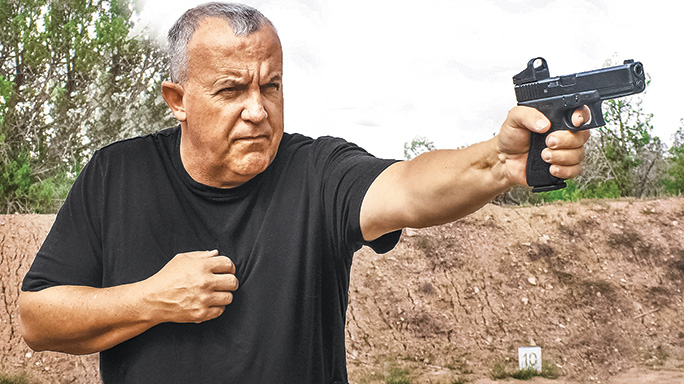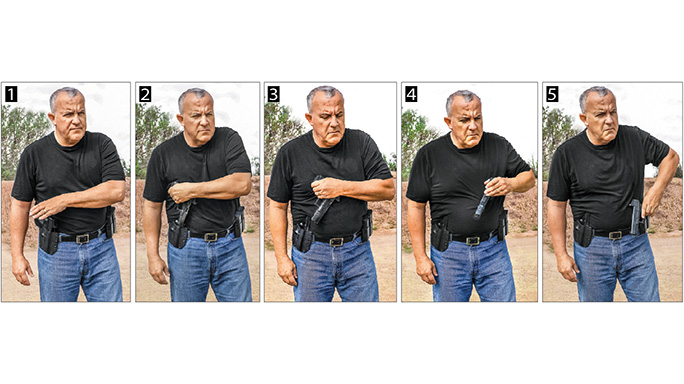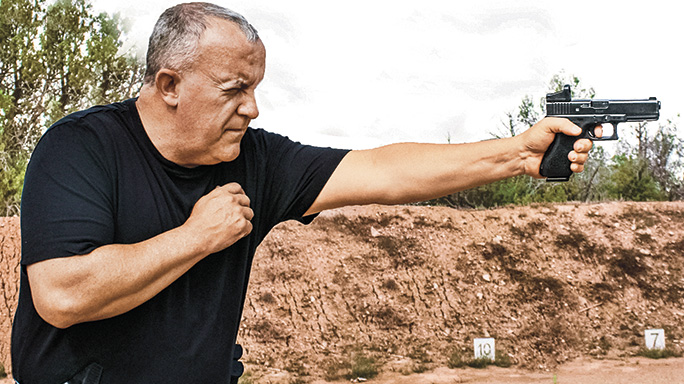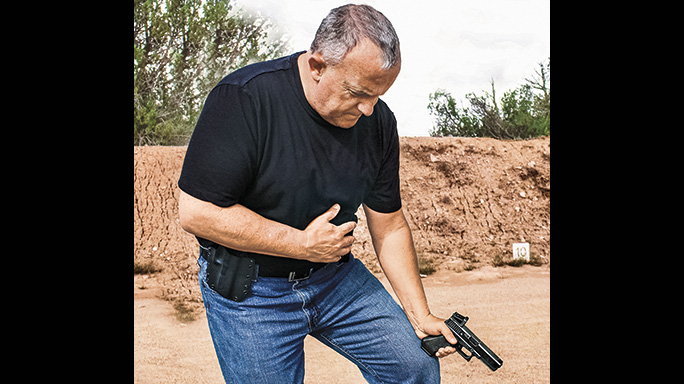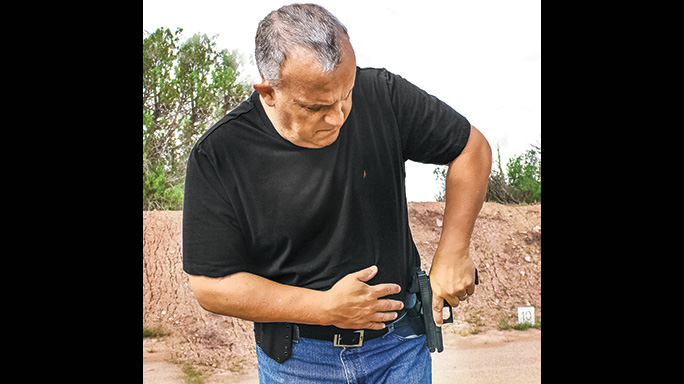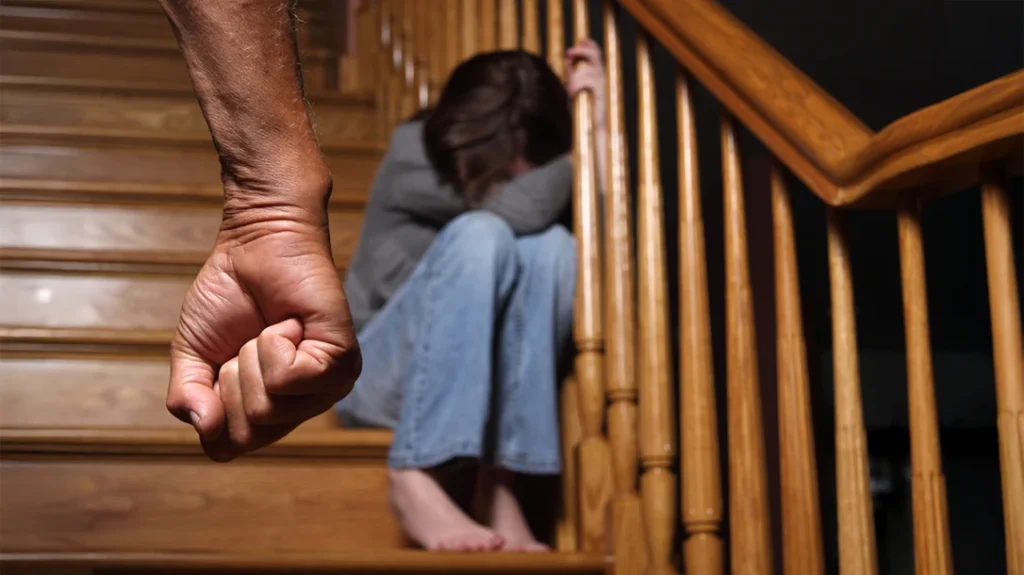For those serious about personal protection, worst-case scenarios are a common discussion. This is especially true with firearms use.
The best possible scenario if we ever have to use a gun is that we can get a good grip, have cover and end the fight quickly. While it is essential to train for this scenario, we must look at the “what if” situations as well. One that does not get as much attention as it should is single-handed, support-side shooting.
- RELATED STORY: Real-World Self-Defense Prep Through Competitive Shooting
Often called “weak-side” shooting, this skillset focuses on the ability to fire and manipulate your weapon when your dominant hand or arm is injured. This is a crucial skill because a failure to transition to your support-side hand if injured can result in death. While there are numerous specific components of support-side shooting, we will take a look at some of the most important skills.
Advertisement — Continue Reading Below
Drawing & Firing
An injury to your strong side may occur even before you are able to get the gun into the fight. If this is the case, you will need to use your support-side hand to get your weapon out and into action. The position and location of your holster will drive a great deal of this, but the principles are the same. Reach with your support hand and index the weapon. At this point it will be “upside down.” Draw the weapon in a fluid motion. You will need to pivot the gun in your hand. This can be helped by using your leg or other surface as a balance/press point. It is important to keep positive control of the weapon and remain aware of your muzzle orientation. Once the weapon is oriented correctly, you can then acquire a firing grip and get to work.
Shooting with the support hand differs very little from shooting one-handed with your dominant hand. A firm (but not crushing) grip, coupled with a smooth, continuous trigger pull will result in accurate and repeatable shots. This will also minimize the movement of the gun in your hand. One specific area to focus on is a smooth press of the trigger directly to the rear. Many times in one-handed shooting the trigger gets “smeared” as the finger slides across the trigger during the press. This can push shots off target. A consistent press also minimizes any snatching of the trigger, which drives shots low.
Advertisement — Continue Reading Below
Reloading
If the fight drives on, you may need to reload your weapon. As with everything in shooting and firearm manipulations, there is a process to work from. One method to execute a reload is as follows: Eject the empty magazine to the ground, reholster the weapon (accepting that it only fits in partially because it will be backwards), index a fresh magazine and seat it into the mag well. Now reacquire your grip on the gun, draw it back out with a free finger, press down on the slide stop and let the action run forward. You are now ready to re-enter the fight if need be.
Clearing Malfunctions
Advertisement — Continue Reading Below
The downside to shooting one-handed is that, unless you do it extensively, malfunctions tend to occur. The most common is a Type 2 malfunction, or a failure to eject. The gun moves slightly in your hands and the slide does not get its regular motion. The standard remedy for this malfunction is described as “tap, rack, flip.” This can be done one-handed with practice. The first step is to “tap.” This ensures the magazine is seated correctly. One method is to use your knee as a surface to tap the magazine on. Second is the “rack.” This is where caution and diligence are essential. Sloppy muzzle and trigger discipline can result in serious injury. You will need to find a firm surface to hook your rear sight on. One that is commonly used is the mag pouch or belt. You can also use a countertop or any other firm surface. Hook the sights and drive the gun downward, thus racking the slide. Make sure it is a full manipulation.
- RELATED STORY: Anatomy of a Gunfight: Surviving a Shootout
The final step of “flip” is incorporated at this point as well. As you rack the slide, flip the gun sharply, which will clear anything that may be sitting in the chamber. This technique should be practiced initially under professional supervision. Then training should be done with an empty weapon until you master the skill.
Basic Training
Advertisement — Continue Reading Below
These are just the basics of support-side shooting. There is also positional work, close quarters, weapon retention and numerous other components that must be mastered. If you are serious about the art of gunfighting, you would be well served by extensive training on one-handed operations. We enjoy shooting with two hands on our dominate side because we are good at it. It is the areas where we are not as effective where we need to train the most. These are the skills that Mr. Murphy will test when all hell breaks loose.
